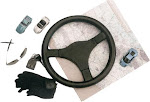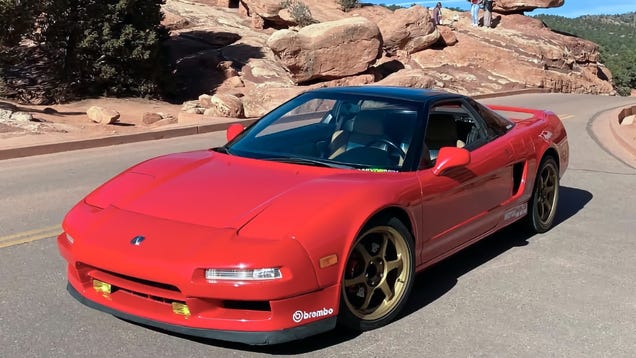Timeline for the 356
Here's a very rough timeline of the development of the 356, compiled from a variety of sources. "Driving in it's Purest Form", "Excellence was Expected", "Speedster" and "Porsche : 356 & Rs Spyders" are all recommended for the Porsche 356 enthusiast and those interested in the Porsche history 1948-1966. See also the Porsche North America corporate website from which much of the below material came. The student of Porsche and 356 history is strongly encouraged to seek out the above books for a detailed history of the car, the company and the amazing individuals who brought us the 356.

1948: Gmünd, Austria. The Porsche Firm, having located to Austria just after the war to be closer to parts suppliers, turns out a variety of automotive, farm and industrial motors and tools for the war-ravaged western europe. Ferry Porsche (son of the famous Dr. Ing Ferdinand Porsche, founder of Porsche motors) designed and fabricates the first Project #356 car, model 356-001. The car utilized a tubular chassis, an 1100cc engine and was very light and so quick for the time. Karl Frolich was the gearbox and suspension specialist contributing to the handling of the prototype. Ferry Porsche often took the prototype--sometimes just the rolling chassis without body--up the steep mountain roads surrounding Gmünd and found the car a spright handler and good climber.
The body of the car was designed by Irwin Komenda. Kommenda, an Austrian born in 1904, contributed substantially to the Volkswagen, Cistalia, Auto Union racers and other cars of the day. Though the car changed from mid-engine to rear, the tubular chassis gave way to a unitized pan and body construction, and a myriad of details evolved over the 22 year run of the model, the overall design and instantly recognizeable shape of the car remained the same, a timeless classic. Komenda joined Porsche's design bureau in 1931 after positions at Steyr and Daimler-Benz and other coach shops in Austria and Germany. Komenda contributed to many other designs in Porsche's history and was the chief engineer and head of Porsche's coach werk from 1955 until his death in 1966.
Karl Peter-Rabe was the "confidential clerk" for Porsche, and became the chief business manager, after Prizing, until 1965. Dr. Ing Albert Prizing was a business manager who brought 37 orders back to the factory after one importer's conference in Wolfsberg in 1950.
The original 356-001 car is raced at the Innsbruck city race, achieiving a victory in the 1100cc class in its first outing. Porsche was homologated by the state government of Kärnten in Austria on 8 June 1948. Above and below photos courtesy of the Porsche archives. The original Porsche "001" car is in the Factory Meuseum and frequently tours the world for special car shows and historic events.
 Over 50 Gmünd cars are built and sold primarily in Austria and Germany. Many still survive in US and other collections around the world. Over 50 Gmünd cars are built and sold primarily in Austria and Germany. Many still survive in US and other collections around the world.
1949: The first 356 Cabriolet is built. The Gmünd cars are alloy aluminum.
1950: The factory relocates to Zuffenhausen, next to the Reutter coachwerks and begins production on the 356. This run will continue to 1965, and produce nearly 80,000 cars. Cars are produced by other coachbuilders as well, namely Gläser.

A 1951 "split windshield" 356 Cabriolet. Porsche 356es made prior to 1955 are sometimes called "Pre-A", as the model took on the letter predicate at that time.
1951: Porsche 356 technical innovations continue. The 1.3 liter motor has chrome plated aluminum cylinders and the world's first synchromesh transmission. Porsche 356-002 wins at LeMans in the 1100cc class. The "Old Professor", Dr. Ing Ferdinand Porsche, Sr. dies at 75. Porsche KG employs 1400 people as Ferry Porsche leads the company.

1952: The 1500 "Super" engine is introduced (1488 cc, 70hp DIN)
1953: In a deal with Max Hoffman, of New York, Porsche introduces the 356 to the United States. Soon Hoffman makes arrangements with select foriegn auto dealers around the country to carry the Porsche cars. Hoffman acts as sole US importer. Split windshields give way to bent windshields.
 1954: Hoffman urges Porsche to make a less-expensive "stripped-down" model of it's open car for the West Coast. Fair weather, a cruising scene and lots of amateur racing make the "Speedster" a success, a staple production for the next 5 years. Over 4100 Speedsters will be sold by 1959. 1954: Hoffman urges Porsche to make a less-expensive "stripped-down" model of it's open car for the West Coast. Fair weather, a cruising scene and lots of amateur racing make the "Speedster" a success, a staple production for the next 5 years. Over 4100 Speedsters will be sold by 1959.
1955: The 1600 motor is in production. The 1500 GS Type 547 Carrera motor is in development for racing and finds its way into the 356 production line. The "A" version of the 356 model is introduced. Numerous subtle differences in the shape of the body and features of the care are introduced. Almost half the cars sold are open cars: cabriolets and Speedsters. The "A" models are named internally at "Type 1", and thereafter known by enthusiasts as "T-1" cars.
1956: The 10,000th 356 Rolls off the assembly line. Pictured below with Ferry Porsche.

1957: More improvements to the 356A results in a new project, the Type 2, or "T-2". A new transmission, the 644 replaces the earlier 519 with improved shifter, a split case design, dual nose mounts and better synchros.
1958: Continued improvements in the Carrera engines yield higher horsepower. Production begins on the "Convertible D", a replacement for the Speedster. The "D" is made by Drauz factory, and the car is between a Speedster and a Cabriolet in luxury and lightweight appointments. Most noticeable are the roll-up windows and a taller, but still "removeable" windscreen.
1959: The last Speedster is made. The 1300 engine is dropped from the line. In the fall a new model, the Type-5 (T-5), 356B is introduced. The Convertible D becomes the Roadster with the new T-5 body style.
1960: The 356B gets the "Super 90" (S90) motor as an option, with a counterweighted crank, sodium-filled valves and Solex P40-II carburetors.
1961: The Karmann Coachwerks is employed to make the "Hardtop", which is a Cabriolet body with a fixed hard roof. This profile gives the car the knickname "Notchback". Nearly 1750 of these cars will be made over two years' production
1962: Karmann makes 2170 coupes along with the 4100 made by Reutter. Along with almost 1600 Cabriolets, production tops 7900 for the year. Porsche begins discussion with Reutter to purchase the coachmaker and finally completely consolidate the successes of 12 years of co-operation. The factory launches "Christophorus", a customer magazine of news and background on the Porsche lifestyle.
1963: The 356C, known as the Type 6 (T-6) is introduced, along with the SC engine with 95hp. The "C" has 4-wheel disc brakes, and an optional 12-volt electric system. The optional "Carrera 2" motor develops 130 DIN hosepower.
1964: 356 Production reaches a high of over 10,000 in a single year, more than the entire line production of the first 10 years of the Porsche 356. The factory introduces the 911 model, presaging the end of the 356 line.
1966: The last 10 356 Cabriolets run off the production line in this calendar year, finishing the 1965 model year run. The 4-cylinder Carrera engines contiune racing in the successful 904 model. Total production run: more than 78,000. About 1/2 of the entire production are believed to exist today.
|








No comments:
Post a Comment
Please feel free to add additional information and feedback. And if you would like to be an author on this blog, just let me know and I will give you permission.
Include your Name and Email(will not be published)
Thank you for your time.